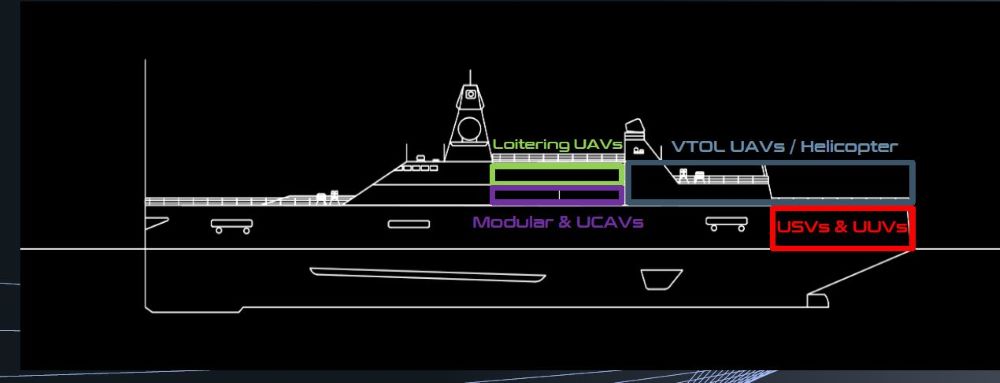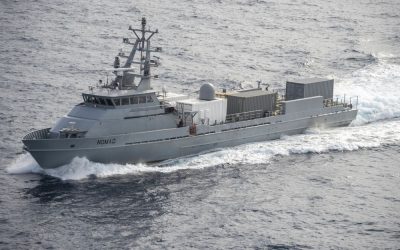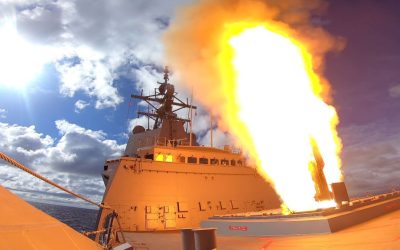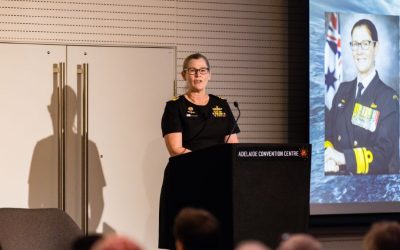Drawing on design practice employed in surface combatants and aircraft carriers, a project to develop concept designs for drone carriers has been developed in response to growing use of naval USVs.
The use of drones in naval warfare has come sharply into focus since the Russian invasion of Ukraine and the use of uncrewed units by the Houthi militia against commercial shipping in the Red Sea.
Their use has highlighted their cost-effectiveness as anti-ship units and raised concerns about how warships might best be modified to defend against them. In 2024 alone, Magura V5 uncrewed surface vessels (USVs) developed in Ukraine have been responsible for sinking of three different warships and a paper presented at the RINA Warship 2024 conference in Australia in June suggests greater use of drones launched from vessels – even dedicated drone carriers – could be approaching.
Speaking at the conference in Adelaide, Rui Pinto da Costa from Damen Naval highlighted the surge in the use of uncrewed vehicles in military operations and described work undertaken to explore the operational potential of the application of uncrewed systems deployed from a dedicated surface ship, engaging with the naval architecture and design challenges associated with such a vessel.
The paper presented at the conference updated work originally undertaken at Instituto Superior Técnico in Lisbon, the aim of which was to develop innovative warship concepts and design tools for new-generation surface combatant design. A conceptual design process for a dedicated drone carrier was developed, with a multi-role operational concept and requirements comparable to modern North Atlantic Treaty Organization navies.
This conceptual design process included an overview of the surface warship preliminary design methodologies, and the development of a concept of operations for drone carriers, along with the definition of operational requirements, the development of a ship synthesis model and development of two ship concepts for different NATO end-users. The overall aim was to design a naval asset capable of deploying large numbers of uncrewed units – above water, underwater and aerial – whilst operating outside a conventional task force.
The final conceptualized vessels, when detailed and analysed, were found to merge various characteristics from modern surface combatants such as frigates, destroyers and cruisers and conventional aircraft carriers. “The operational potential of these ships… is particularly high,” said Mr da Costa, noting that they drone carrier would be “exceedingly versatile.”
Both concept solutions described in the paper complied with the operational requirements established for the study, and with end-user goals. Both concepts were further elucidated and then modelled in 3D in order to develop the conceptual designs. The initial design stages of a drone carrier were undertaken, along with the development of a customised ship synthesis model.
“The concept solutions were both determined to be compliant with the design requirements and could thus be considered successful concept solutions and ready for refinement,” said Mr da Costa. “The solutions were later developed and 3D models of the concept ships were developed, from which the design formulas used in the synthesis model were further refined.”
“Further challenges and improvements are underway,” he concluded. “These include the further refinement of the ship synthesis model and reducing the large computational power requirements that served as bottlenecks to development of the model. Additionally, this model is currently being used to make single optimized iterations of concept warships when considering single ship operational requirements.
“The model is thus evolving in order to be used to optimize the design of a small fleet of ships with varying configurations or to optimize a single ship concept.”




